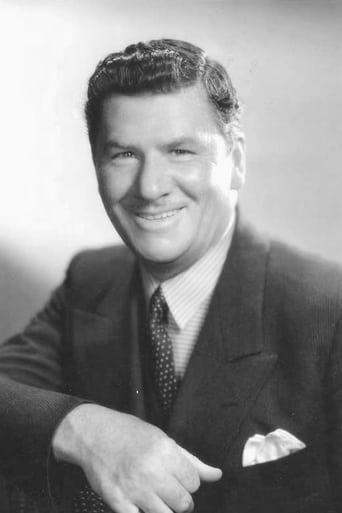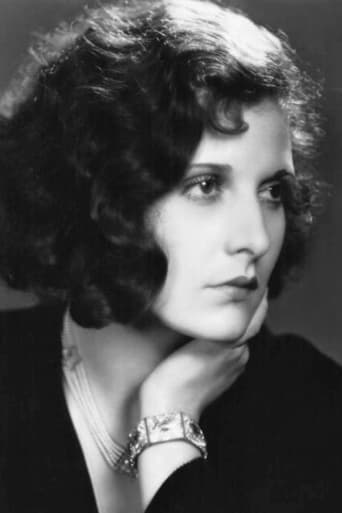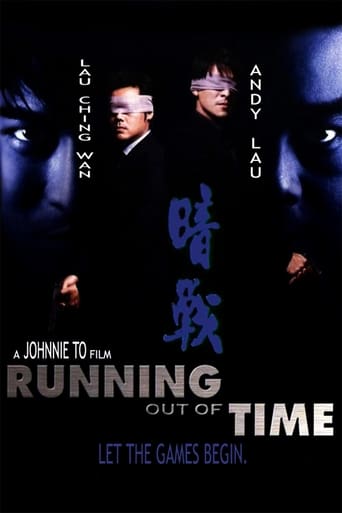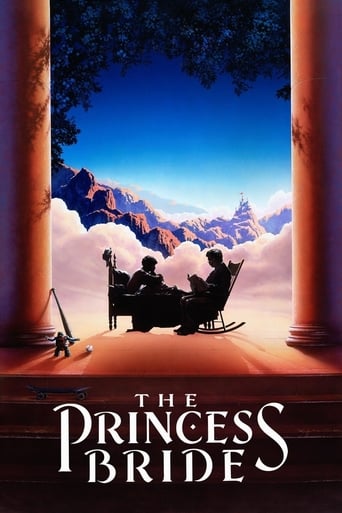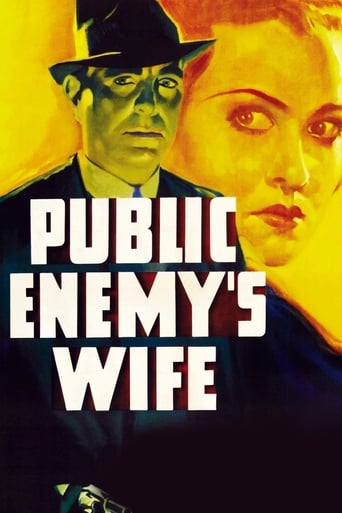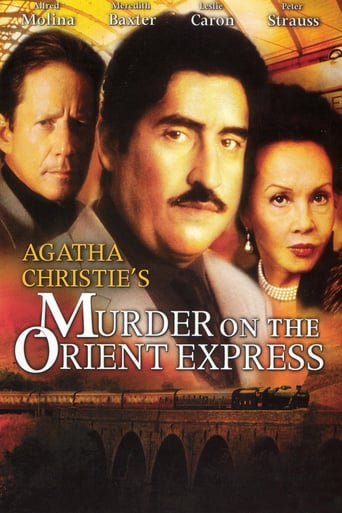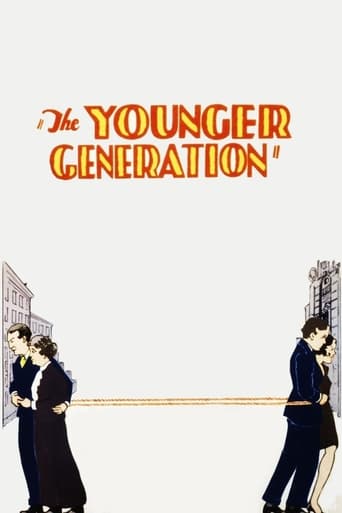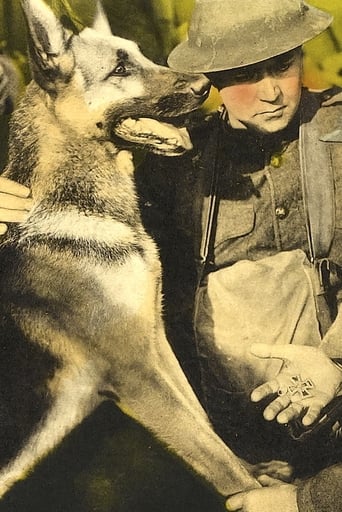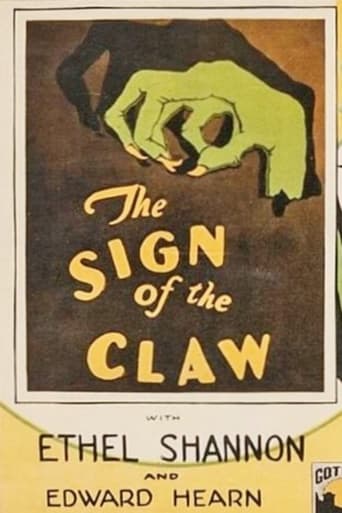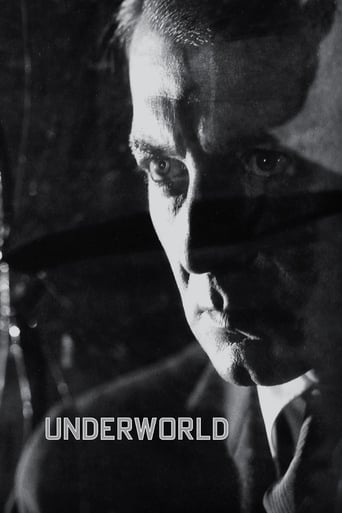
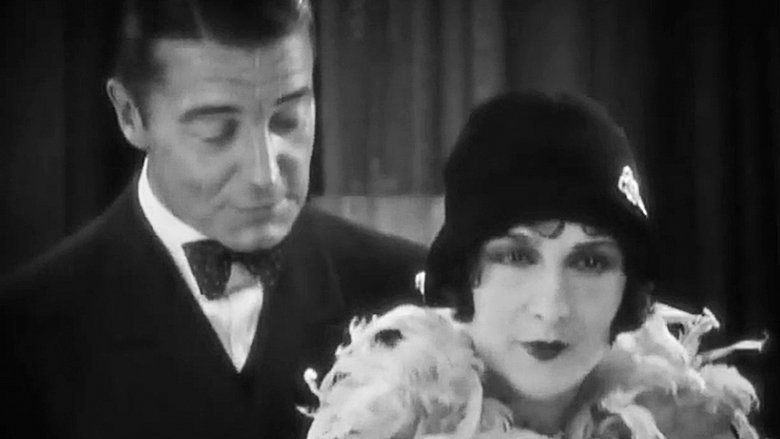
Underworld (1927)
Boisterous gangster kingpin Bull Weed rehabilitates his former lawyer from his alcoholic haze, but complications arise when he falls for Weed's girlfriend.
Watch Trailer
Cast


Similar titles
Reviews
UNDERWORLD (1927) tells the story of love, betrayal and murder among gangsters in 1920's Chicago. Rolls Royce (Clive Brook), an alcoholic former lawyer, gets back on his feet when gangster Bull Weed (George Bancroft) takes him in off of the street. Complications arise when Weed's girlfriend Feathers (Evelyn Brent) and Royce start to become attracted to each other, and when a rival gangster, Buck Mulligan (Fred Kohler) becomes increasingly antagonistic towards Weed. Directed by Josef von Sternberg.UNDERWORLD was von Sternberg's debut feature, and it's quite impressive. This is basically the granddaddy of gangster movies, and you can see its influence in later classics such as LITTLE CAESAR and SCARFACE (the original 1932 version). Ben Hecht was the main screenwriter, so the movie emerges as a starkly realistic portrait of organized crime during the Prohibition. The film moves fast and doesn't waste time, clocking in at an hour and 20 minutes. It keeps you in suspense until the end. The film also boasts fine performances. Clive Brook was very effective as Rolls Royce, a stoic, down-and-out former lawyer who strives to maintain what little dignity he has left and tries to fight his attraction to Feathers. He is quite expressive and believable. George Bancroft is also fine as Weed, alternating convincingly between boisterous charm and raw aggression. Evelyn Brent is adequate in her role as Feathers, though I felt she could have been a bit more expressive at times, but she does have good chemistry with Clive Brook. Fred Kohler is appropriately menacing and brutish as Mulligan, and Larry Semon offers a bit of comic relief as well. The cinematography of UNDERWORLD shows considerable skill and accomplishment. Editing is smooth and fluid, and there are a variety of tracking shots, especially during a car chase sequence, as well as interesting camera angles and lighting. It's an impressive debut and one of the foundations of an entire genre. SCORE: 9/10
This landmark film was maverick director Sternberg's first studio-made effort after a number of false starts (which are denoted in the excellent accompanying 36-minute video essay on the Criterion DVD). While there had been gangster pictures prior to this (notably D.W. Griffith's THE MUSKETEERS OF PIG ALLEY [1912] and Raoul Walsh's REGENERATION [1915] – which I may be getting to now on the strength of both UNDERWORLD and my concurrent Noir marathon), the Sternberg picture seems to have struck a particular chord with audiences as, we are told, screenings were extended all through the night in order to accommodate the extensive demand! In retrospect, the film only features a handful of action sequences – all of which, however, mark turning points in the narrative. The rest is made up of characterization and atmosphere: the latter obviously showcasing the director's masterful craftsmanship (aided by Bert Glennon's camera-work and Hans Dreier's sets) and the former the handiwork of the celebrated Ben Hecht (though he only supplied the original story, as it was reworked by others for the finished version including Sternberg himself) – still, Hecht (who had initially disowned it) was rewarded with an Academy Award at the very first Oscar ceremony! Interestingly, Howard Hawks is also said to have been involved in the 'scenario': if anything, he and Hecht (who particularly objected to Sternberg's ending) would supply their own gangster milestone in SCARFACE (1932), which left no room for sentimentality in its uncompromising approach and made no apologies for the anti-hero's ambitions by substituting "World" upon reprising this film's scrolling neon sign "The City Is Yours"! Hawks, alone, then, would much later borrow the nick-name of the leading lady here, "Feathers", for his RIO BRAVO (1959)! For the record, Sternberg is quoted as having said "I care nothing about the story, only how it is photographed and presented". This is perhaps evidenced here by the dearth of typical gangster activity: we never know just what Bancroft's racket is, a robbery/frame-up and capture/trial are depicted via a series of quick shots, while both the opening bank job and Bancroft's eventual escape from prison are picked-up when they are almost over. The elimination of his rival (since actor Fred Kohler looks and scowls a lot like Lon Chaney, I could not help imagining him in this role and what his collaboration with Sternberg might have been like!), too, occurs over the latter's unwarranted attentions towards his girl.Incidentally, as with THE RACKET (1928), this adopts the beefy businessman-like gangster prototype (presumably inspired by the real-life Al Capone) but, soon, a more dynamic – and nuttier – variety would emerge and supersede it, exemplified on the screen by the likes of James Cagney and Paul Muni. Indeed, while the mobster here i.e. George Bancroft would remain active within the genre (I will be checking out his well-regarded BLOOD MONEY [1933] presently), it is telling that he is seen – both literally and figuratively – being wiped out by Cagney in ANGELS WITH DIRTY FACES (1938)! Other stereotypes on display are the hoodlum's learned associate (as played by Clive Brook, who actually starts out as a bum!) and a 'funny' sidekick (forgotten comic Larry Semon, who eventually falls by the wayside even in this case!).The heroine, played by Evelyn Brent, is once again a pretty forceful character (Sternberg seemed to have a particular knack in this area, which would obviously reach its zenith with his 7 films featuring Marlene Dietrich) and predictably comes to prefer the suave Brook over her uncouth lover/boss Bancroft. Despite their mutual affection, the two however decide to stand by the gangster (who, having been alerted as to their 'betrayal', is all ready to exact vengeance) and, following a remarkable siege at the mob hide-out, what we get is a surprisingly philosophical resolution to the dilemma!
Underworld (1927)A lot of people avoid silent films at all costs, and I understand that totally. Many of these films are stiff, and the plots are either sentimental or obvious. But there are many reasons to watch a good, or great, silent film. Sometimes the acting, whatever its expressive style, is really wonderful. Often the photography and editing is really terrific and sophisticated. And the stories can be fast, fresh, and even pertinent.And finally, the silent films easiest for the uninitiated to approach are at the very end of the silent era. That would be 1927. See Joan Crawford in The Unknown for the bizarre, or Murnau's Sunrise for eloquence, or consider this film, the first major film by the soon to be legendary Josef von Sternberg. The only thing that might put off some people is the exaggerated expressions in one of the three main characters, Bull Weed. But go with that flow and you'll see not only some more subtle acting, but a sweet, violent, complex plot interweave in just an hour or so (81 minutes, though there is an 87 minute version out there if you can find it, Netflix doesn't have it). The Criterion disc version is really clean (another reason to consider this as an intro silent films, since it isn't broken up or scratched to death)."Underworld" is filmed with visual complexity even though it lacks some of the virtuosic moving camera of Murnau. The sets are simple but convincing, and the shift in attention to the gangster side of the story, complete with guns and molls and the precursors (or pre-precursors) of film noir, is gripping. It's not as intense as the heyday of gangster films just four or five years later, but it has if anything more emotional sophistication. The story was written by the legendary Ben Hecht, which might explain some of its success.Von Sternberg you say? Well, he was a master at creating aura, and between him and Dietrich a whole new level of starmaking savvy was born. This, as a first film, and as a last minute replacement, was expected to flop, and was released in a single New York theater. Word spread, however, and it became a hit. You can see why. Great stuff.
Books and essays about the gangster genre often cite Josef Von Sternberg's Underworld as an early, influential milestone, but unfortunately it's not easy to track down in any home-viewable format. Recently I was lucky enough to see this film in a theater, accompanied by live music in a packed house of enthused buffs. Whenever possible, this is the way to see a silent movie! The combination of a good score and the response of a simpatico crowd can really bring these works to life. And while there are some dramas of the '20s that show their age and provoke giggles at the wrong moments, this one is not in that category. Underworld holds up, and offers an unlikely yet oddly credible romantic triangle set in a milieu of violent crime. Like all of Von Sternberg's work it's exquisitely well photographed, and like many late silent films takes full advantage of a range of dynamic devices, including a "whip-pan" from face to face in one early scene and a startlingly fast montage of close-ups in another. But what makes this movie click isn't flashy cinematography or editing, it's the chemistry between a trio of top-drawer players working at full steam.The story is built around three personalities: Bull Weed, played by George Bancroft, "Feathers," played by Evelyn Brent, and "Rolls Royce," played by Clive Brook. Bancroft is unforgettable as Bull, an outlaw of the old school who robs banks and jewelry stores single-handed. The character is, in some respects, the model for gangland kingpins played in later years by Jimmy Cagney and Paul Muni, and yet in a sense he's not a "gangster" at all, for he works solo and has only a handful of allies who show up at key moments and then vanish. Bull doesn't travel with bodyguards or hang out with the boys; despite his natty suits and urban lifestyle he suggests a Western bad man who rides alone. In the early scenes when he's at the top of his game Bull is boisterous, punctuating every conversation with gusts of hearty laughter, but as his situation darkens the laughter vanishes and the guy suddenly resembles an actual bull in an arena, grim and beady-eyed, still physically powerful but cornered and bewildered over how it could have happened. It's easy to see why this performance made George Bancroft so popular at the time: he's a larger-than-life actor with one of those homely/attractive faces, along the lines of an Edward G. Robinson or a Wallace Beery, not handsome but decidedly charismatic.The beautiful Evelyn Brent is Bull's girlfriend Feathers, so called because of her feathery outfits. Although her character is not as fully delineated as Bancroft's Brent manages to convey a great deal of information with her fascinating eyes. It's clear that Feathers is a lot more intelligent than she lets on. She stays with Bull out of loyalty and gratitude but is well aware of his limitations, and increasingly unhappy about her own dependent status as his "moll." When an opportunity arises to run away with a more attractive and substantial guy she is immediately tempted, even if it means toying with the idea of betraying Bull to the cops, but she's also decent enough to recognize her obligation to him. Bull, after all, risks everything as a direct result of defending her honor when she's attacked. Feathers, despite her froufrou outfits and a nickname more suitable to a bimbo, is smart, sensitive, and surprisingly ethical for someone in her position.Bancroft and Brent are terrific, but for my money the most memorable performance in Underworld is delivered by Clive Brook. Before this I'd seen Brook in several other films (including Von Sternberg's Shanghai Express opposite Marlene Dietrich), most often playing noble, stiff-upper-lip Englishmen, handsome and respectable but just a bit dull. Here, Brook is a revelation. In the opening scenes he's so decrepit he's not even recognizable, playing against type as a washed-up bum, unshaven and bleary-eyed. We learn that Brook's character is an attorney who went crooked and eventually became an alcoholic, but we aren't told much more. However, like Brent, the actor tells us everything we need to know that isn't directly stated in the text. His transformation begins when Bull Weed takes a liking to him, nicknames him "Rolls Royce" and makes him, in effect, his lieutenant. Much of what happens after that point concerns the growing tension between the three characters as an unavoidable attraction develops between Feathers and Rolls Royce, although they fight temptation and struggle to remain loyal to their boss. The scenes between the trio really heat up as the sexual tension between Feathers and Rolls Royce deepens.Underworld isn't as flamboyantly violent as some of the famous crime flicks of the '30s and '40s, but there are a number of stylistic touches that mark it as a definite progenitor of those films. For instance, just before the climactic gun battle, Bull takes a sympathetic interest in an orphaned kitten, a motif echoed years later in This Gun for Hire. At another point, with rather heavy irony, a crook is gunned down in a flower shop before a wreath reading "Rest In Peace." A drawback as the film rolls along is the pile-up of increasingly unlikely plot twists, especially where Bull's escape from jail is concerned, although the momentum of events tends to carry the viewer along. Also, while the writing is generally taut, one title card during the gangsters' party sequence is so over-written it suggests a witches' coven. (This line drew chuckles at the screening I attended.) Aside from that unfortunate lapse into purple prose, Underworld holds up beautifully, at least as well as the more familiar gangster classics of the '30s it influenced. This film deserves the attention that should come with a full restoration and greater availability.


